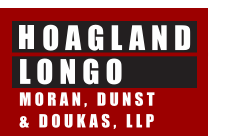Snow, Sidewalks, & Slip and Falls – The Case of Gottsleben v. Annese
As winter nears, homeowners and property managers should be reminded of the recurring issue of snow and ice removal — and when, exactly, they can be held liable for slip-and-fall injuries on adjoining sidewalks. A recent Appellate Division decision, Gottsleben v. Annese, offers useful guidance and reaffirms the limits of homeowner responsibility under New Jersey law.
Background
The case arose after the plaintiff slipped and fell on a snow- and ice-covered public sidewalk in front of a home in Morristown. The property owners, the Anneses, had purchased the house several months earlier but had not yet moved in because it was under renovation. The plaintiff argued that because the property was vacant and being improved, it should be treated as “commercial,” making the owners liable for the condition of the sidewalk.
Alternatively, the plaintiff claimed that the homeowners made the sidewalk more dangerous through their snow-removal efforts.
The trial court disagreed and granted summary judgment for the homeowners. The Appellate Division affirmed.
The Court’s Decision
The Court reaffirmed New Jersey’s long-standing rule that residential homeowners are not liable for injuries caused by the natural accumulation of snow and ice on public sidewalks.
Even though the home was temporarily vacant and undergoing renovation, the Court held that it remained a residential property. It was zoned residential, intended for residential use, and not being used for business or profit. Renovations and temporary vacancy alone do not transform a home into a commercial property.
The Court also found no evidence that the Anneses worsened the condition of the sidewalk. The photographs the plaintiff relied on were taken days later, after another storm, and did not establish that the homeowners had created or increased the hazard. As a result, the homeowners were shielded from liability.
Key Takeaways
- Residential vs. Commercial Matters: Liability for sidewalk conditions depends on the property’s character and use. A home remains residential even if vacant or under renovation, unless it is being used commercially.
- Homeowners Are Still Expected to Be Careful: While residential owners generally aren’t liable for natural snow and ice, they can be if their actions — such as piling snow improperly or causing meltwater to refreeze — make the condition worse.
- Local Ordinances Still Apply: Even if common-law liability doesn’t attach, municipalities often require homeowners to clear sidewalks within a set time. Violations may result in fines or municipal enforcement.
- Risk Management Is Key: Homeowners should take reasonable steps to address snow and ice for the safety of pedestrians, and to minimize risk of disputes or litigation.
Why It Matters
Gottsleben v. Annese underscores that New Jersey courts continue to draw a clear line between residential and commercial sidewalk liability. Homeowners can take comfort knowing that temporary vacancy or renovation doesn’t change their legal duty — but that doesn’t mean they should ignore snow and ice altogether. Maintaining safe walkways remains the best defense against both injury and litigation.
This decision builds on the same body of law examined in my earlier article, “New Jersey Has Weathered the Storm: Supreme Court Adopts the Ongoing Storm Doctrine”, where I discussed the “ongoing storm” rule and how timing and weather conditions can impact premises liability. Together, these cases illustrate how New Jersey courts continue to clarify the limits of responsibility during winter weather events.
If you have any questions about the information in this post or if you would like to learn more on this topic, you can contact Joshua Filzer at jfilzer@hoaglandlongo.com, Joseph Leone at jleone@hoaglandlongo.com, or call 732-545-4717.
